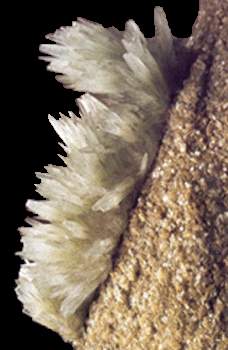In the situations above, one might attach a high genetic
significance to a calcic horizon. In some other circumstances,
however, one can attach little genetic significance to the
absolute amount of carbonates in a horizon or layer of
carbonate accumulation. Deposition from ground water at a
depth of 3 m or more is likely a geologic rather than a
pedologic process. In soils that formed in calcareous materials
on steppes, the amount of calcium carbonate in horizons that
contain secondary calcium carbonate is a partial function of the
amount of calcium carbonate in the parent materials.
Some plant species growing in soils with calcic horizons
often exhibit “lime-induced chlorosis,” in which
micronutrients, such as iron, manganese, and zinc, are
rendered unavailable to the plants. Plant species that occur
naturally in arid environments frequently do not exhibit this
chlorosis, but many agriculturally grown plant species, such as
citrus, avocados, corn, and beans, are susceptible to
micronutrient deficiencies in calcareous soils.
Required CharacteristicsThe calcic horizon has all of the following properties:
1. Is 15 cm or more thick; and
2. Is not indurated or cemented to such a degree that it meets
the requirements for a petrocalcic horizon; and
3. Has one or more of the following:
a. 15 percent or more CaCO3 equivalent (see below), and
its CaCO3 equivalent is 5 percent or more (absolute) higher
than that of an underlying horizon; or
b. 15 percent or more CaCO3 equivalent and 5 percent or
more (by volume) identifiable secondary carbonates; or
c. 5 percent or more calcium carbonate equivalent and
has:
(1) Less than 18 percent clay in the fine-earth fraction;
and
(2) A sandy, sandy-skeletal, coarse-loamy, or loamyskeletal
particle-size class; and
(3) 5 percent or more (by volume) identifiable
secondary carbonates or a calcium carbonate equivalent
(by weight) that is 5 percent or more (absolute) higher
than that of an underlying horizon.





 من 70 شدم
من 70 شدم
